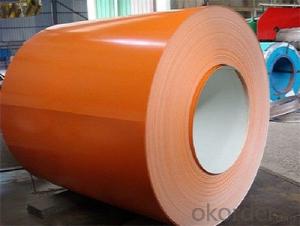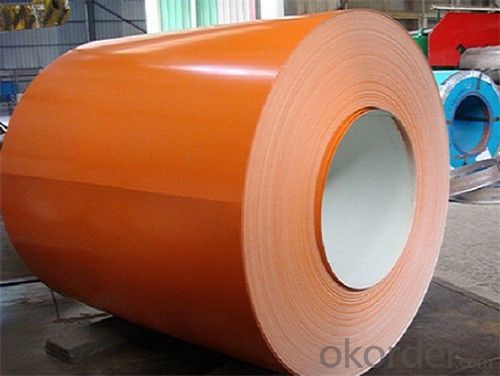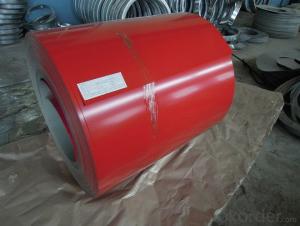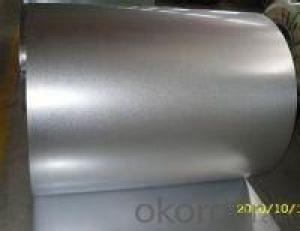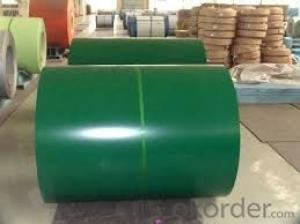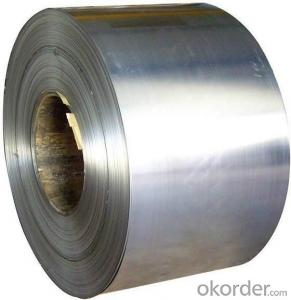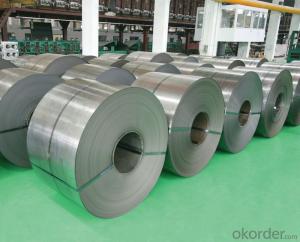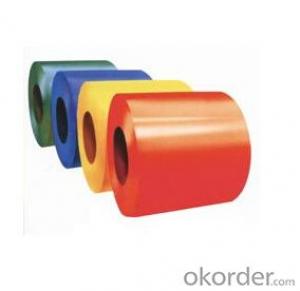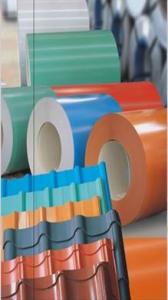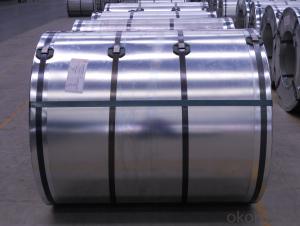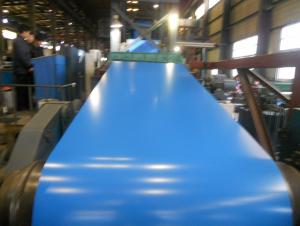color Coated Galvanized cold Rolled Steel Coil
- Loading Port:
- Tianjin
- Payment Terms:
- TT OR LC
- Min Order Qty:
- 25 m.t.
- Supply Capability:
- 300 m.t./month
OKorder Service Pledge
OKorder Financial Service
You Might Also Like
Specification:
1. Standard: HDGI, ALUZINC, CR
2. Grade: SGCC, DX5ID, ASTM, EN10142, S350GD, etc
3. Zinc coating/Aluzinc coating: Z50-200g/ etc m2
4. Package: Export standard package or as per the buyers' requirement
5. Application: Mainly used in the field of roof, outer wall and cabinet, automotive manufacturing, electrical products, locomotives, aviation, precision instrument, canned food, ect
6. Product features:
(1) good durability, and can be used longer than galvanized steel;
(2) has good heat resistance, and compared with galvanized steel, under high temperature it does not discolor easily;
(3) has good heat reflecting
(4) have silvery white luxuriant surface;
(5) has machining capability and spraying performance similar to galvanized steel;
(6) good weldability. Prepainted galvanized steel ppgi corrugated roof sheet
Application Area:
Building exterior, Building interior, Furniture, Household appliances, Steel windows, Panels, Garage doors, etc...
Superiority
1. Good adhesion, can be roll forming
2. The prepainted galvanized steel ppgi corrugated roof sheet color not change even after being roasted under high temperture for 6-12 years
3. Process: Continuous coil coating line --- 3 coating and 3 bake
4. Protective film can be added
Export standard:
Prepainted galvanized steel ppgi corrugated roof sheet 4 eye bands and 4 circumferential bands in steel, galvanized metal and waterproof paper around circumference and bore protection.
| Low-carbon steel | |||||||||
| Base metal | Steel grade | Chemical constitution (heat analysis) % | |||||||
| C | St | Mn | P | S | Alt | Ti | Nb | ||
| Less than | Less than | Less than | Less than | Less than | Less than | Less than | Less than | ||
| Cold rolled base metal | DC51D+Z,DC51D+ZF St01Z, St02Z, St03Z | 0.10 | - | 0.60 | 0.035 | 0.005 | - | - | - |
| DC52D+Z(St04ZR), DC52D+ZF | 0.08 | - | 0.45 | 0.030 | 0.030 | - | - | - | |
| DC53D+Z(St05ZR), DC53D+ZF | 0.08 | - | 0.40 | 0.030 | 0.030 | - | - | - | |
| DC54D+Z(St06ZR), DC54D+ZF | 0.01 | 0.10 | 0.30 | 0.025 | 0.020 | 0.015 | 0.10 | - | |
| DC56D+Z(St07ZR), DC56D+ZF | 0.01 | 0.10 | 0.30 | 0.025 | 0.020 | 0.015 | 0.10 | 0.10 | |
| Hot rolled base metal | DD51D+Z(St01ZR), St(02ZR) | 0.10 | - | 0.50 | 0.035 | 0.035 | - | - | - |
| DD54D+Z(St06ZR) | 0.01 | 0.10 | 0.30 | 0.025 | 0.020 | 0.015 | 0.10 | 0.10 | |
- Q: How can I judge the quality of steel?
- Various ways: Carry out mechanical testing on it to see how strong it is. eg. Tensile testing, hardness testing, impact testing. Examine a cleaned up sample on the steel under a microscope to see what the steel grain structure is like and what condition it is in (hardened etc.) Or the easiest way is to ask the supplier what it is and then find a specification sheet giving you all the above information.
- Q: why does steel have a density range when other metals do not?
- Steel is not a pure element it is an alloy. Steel is primarily iron but it has many elements blended in that change it's density including carbon,silicon, nickel, chrome, etc. Aluminum and copper , magnesium and so forth can be the pure element or they can be alloys too. If they are alloys, then their densities vary also
- Q: What are the common methods of protecting steel coils from corrosion during storage?
- Common methods of protecting steel coils from corrosion during storage include applying a protective coating or film, using desiccants or moisture-absorbing materials, implementing proper ventilation and climate control, employing corrosion inhibitors or VCI (Vapor Corrosion Inhibitors), and ensuring adequate packaging and sealing to prevent exposure to moisture or contaminants.
- Q: I want to know what to my wash stainless fridge door with before applying the stainless steel polish.
- Quite a few companies make stainless steel cleaners. Don't use Windex, I was told when we bought our stainless fridge and stove. Go to Home Depot or a store like it and I am sure they will have some to choose from. I bought these pre-treated wipes for Stainless Steel at Bath Beyond (like Lysol makes) and they work wonders for a quick cleaning. Linens N Things also has some wipes.
- Q: I completed the missions in broken steel like: the one of the rangers, the one of vault 101, the one of the enclave, and several others.are there any more INTERESTING missions?
- I purely have been given it, and that i had carried out all the missions. i all started at a save element interior the midst of the sport so i ought to nonetheless redo some tiers and it pops up and tells you that the point cap has been raised. you nonetheless can do all the outdated missions no prob. in spite of in case you all started a sparkling character and went with the aid of them lower back you would be waiting to get to point 30 and then proceed on after the unique ending.
- Q: How do steel coils contribute to energy performance in buildings?
- Steel coils contribute to energy performance in buildings through their use in the construction of energy-efficient heating, ventilation, and air conditioning (HVAC) systems. Steel coils are commonly used in HVAC equipment, such as air handlers and heat exchangers, due to their excellent thermal conductivity and durability. By efficiently transferring heat or cool air, steel coils help regulate the temperature in buildings, reducing energy consumption and improving overall energy performance. Additionally, steel coils are often used in the construction of insulated panels and roofing systems, providing excellent insulation and preventing thermal bridging, thereby further enhancing the energy efficiency of buildings.
- Q: Hi, I have ranch style home. I would like to remove a barring wall, And leave it open it will become a 18' foot 7 inch opening , and I'm interested in installing a steel beam so that i may remove the barring wall that supporting the ceiling and rafters. My house is about 57' feet long 28' feet 7 inch wide and it is 13' feet high from the floor to the top of the roof ridge. I heard there is aluminum beams but I never heard of that, I've only heard of steel beams. I don't want to use wood. I would also like to now how much longer do i need the beam to be the opening would be 18'7 plus the extra that i would need to put on the block wall to hold the beam up, do I make it 2' feet bigger so i can have a foot on each side that would sit on a block wall. or do i need more then that.THanks for your help
- My okorder for help
- Q: Cooling bed generally a part of the steel rolling mills
- Another type of cooling bed is used for square stock. It consists of several beams with angles cut upward from the bottom. The beams move in alternating fashion so that the square beam is lifted and sat into the next 'tooth'. The angle is cut so that the beam rotates as it is set down. This keeps the stock straight while it cools.
- Q: How are steel coils packaged for shipping?
- Steel coils are typically packaged for shipping by placing them on wooden or steel pallets, securing them with steel bands or straps, and covering them with protective wrapping such as plastic or waterproof paper. This packaging ensures the coils remain stable, protected from corrosion, and are easy to handle and transport.
- Q: How are steel coils inspected for weldability?
- Steel coils are inspected for weldability using various methods, such as visual examination, non-destructive testing (NDT) techniques like ultrasonic testing or magnetic particle inspection, and chemical analysis. These inspections help identify any surface defects, internal discontinuities, or impurities that may affect the weldability of the steel coils.
Send your message to us
color Coated Galvanized cold Rolled Steel Coil
- Loading Port:
- Tianjin
- Payment Terms:
- TT OR LC
- Min Order Qty:
- 25 m.t.
- Supply Capability:
- 300 m.t./month
OKorder Service Pledge
OKorder Financial Service
Similar products
Hot products
Hot Searches
Related keywords
